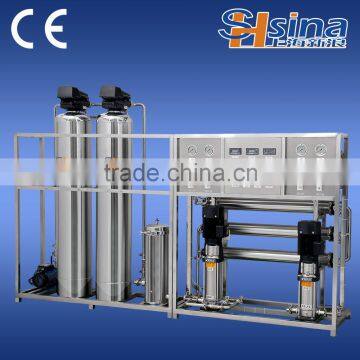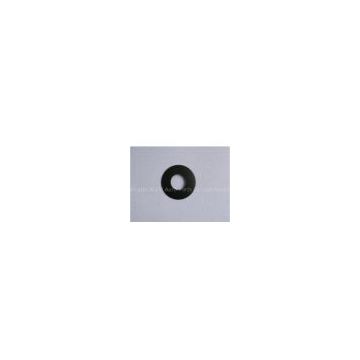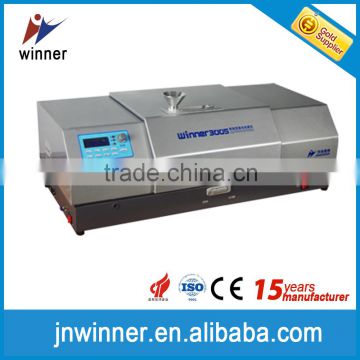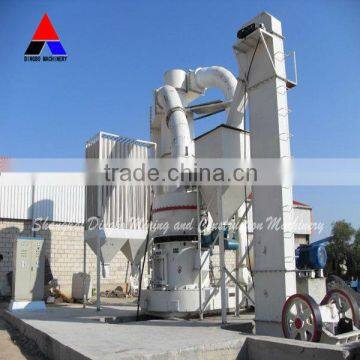Powder Activated Carbon Insights & Buyer's Guide
Powder Activated Carbon is one of the essential products in different industries, coming to changes in adsorption properties and hence utility. Water treatment or air pollution,...some means the PAC truly enhances the quality of our everyday resources while reinforcing sustainable practices. This article looks at the extraordinary features, myriad applications, and benefits of powder activated carbon-the very reasons that make it the go-to solution in today's environmental and industrial challenges-whether one is looking for clean solutions or is just intrigued by what makes an interesting material. This guide provides an in-depth look at the advantages and applications of PAC.
Understanding Powder Activated Carbon
What is Powder Activated Carbon?
Powder activated carbon (PAC) is a unique form of activated carbon, characterized by a fine particle size and tremendous surface area, making it extremely effective in adsorption. It is obtained by activating carbonaceous materials like coal or coconut shell at high temperatures in an inert atmosphere. These carbon particles develop higher porosity and surface area during activation and thus become better adsorbents. Because of their fine particle nature, the powder activated carbon is mostly utilized in water treatment for rapid adsorption of contaminants, odors, and organics. Reputed as an activated carbon for the finest water treatments, its tiny particle size allows rapid interfacing with various impurities. It's still handy for air purification and wastewater treatment, where PAC is key to the removal of pollutants and subsequent environmental compliance.
Properties of Powder Activated Carbon
The activated carbon properties of high adsorption are mainly due to a high surface area and porous structure. These qualities are essential for trapping contaminants of all sorts, from organic compounds to inorganic impurities. PAC pores are designed so that maximum contact with contaminants is made, thus inducing adsorption with the filtering process. Carbonaceous PAC adsorbs impurities at a molecular level, purifying effectively. Furthermore, the fine particle size of the powder activated carbon allows contaminants to diffuse quickly through the porous network, which is highly favorable in dynamic systems, where faster adsorption is needed. The ash content of an activated carbon is another vital property: low ash content results in an enhanced capacity for adsorption and, therefore, in a greater efficiency of PAC for its various uses. This is why PAC finds major utility in removing contaminants in water purification, air filtration, and waste treatment.
Difference Between Granular and Powdered Activated Carbon
Granular activated carbon and powdered activated carbon contrast in two basic respects-their physical forms and their applications.
Particle Size and Surface Area: GAC particles range from 0.2 mm to 5 mm in size, granting them a surface area somewhat lower than that of finely ground powdered particles of PAC. Being of smaller size, PAC offers swift adsorption rates owing to its high surface per unit volume.
Applications: Unlike the technical processes where GAC is mostly used in fixed-bed filters and carbon block systems wherein long contact times are possible, PAC is better suited for systems that demand the swift removal of contaminants; this includes liquid-phase-type processes and dynamic flow systems.
Typically, granular or powdered activated carbon will be chosen on the basis of the actual application considerations, some of which are flow rates, adsorption speed, and the chemicals to be adsorbed. Both form of activated carbon has an important function in water and wastewater treatment, air purification, and industrial applications, with one set of benefits favored over the other depending on the application circumstances.
Advantages of Powdered Activated Carbon
Adsorption Efficiency
Atypical in adsorption efficiency, powder activated carbon maximizes surface area with the extremely small particle size, and the consequent rapid interaction with contaminants. This fits particularly well into water treatment because the speed of impurity removal cannot be compromised. The carbonaceous nature of a PAC system makes for a perfect environment for the adsorption of organic compounds and other impurities for complete purification, while activated carbon in this kind presents a more convoluted pore structure to the adsorption process through the least contact consideration with impurities. Each gram of activated carbon can adsorb more than its weight in impurities, thus listing it as a viable candidate whenever swift and efficient filtration is required. The powdery fine particles of PAC allow for quick diffusion and adsorption-where in fact this is what matters to dynamic systems such as municipal water treatment and industrial purification processes.
Cost-Effectiveness for Water Treatment
The powder activated carbon's solubility in water is an advantage that enables one to maintain very high adsorption capacity and reduce the total dosage to the absolute minimum for any satisfactory purification. PAC achieves much greater contaminant removal than do other forms of activated carbon when applied in lower dosages. This compensation for the lower dosage levels translates directly into reduced costs in operating water filtration systems and makes PAC an economically attractive option for the much larger applications such as municipal water treatment and drinkable water purification. Added to that, another option for reducing the cost could be the regeneration of spent granular activated carbon with the addition of PAC in the treatment stage that would prolong the life of the carbon filters. The price factors of PAC, thus, together with an excellent capability of removal of a wide range of impurities, indicate PAC as a sustainable and cost-effective alternative in water treatment processes.
Environmental Benefits of Powdered Activated Carbon
The PAC powder offers myriad environmental advantages, especially in pollution abatement and sustainability enhancement. Its application in the purification of water and wastewater abets pollutants downcasting, thus keeping hazardous substances from entering nature. PAC sustains thorough purification of drinking water and industrial effluents, thus protecting aquatic ecosystems and furthering public health. Therefore, assistance in the reduction of the emission of volatiles by adsorbing odors and organic compounds stands to the benefit of the environment. Regeneration and reuse of the carbon agent materials, including PAC, go some way toward resource conservation and waste reduction. As industry moves towards greener solutions, the need for powdered activated carbon to facilitate this environment-friendly purification process becomes indelibly more relevant.
Industry-Specific Applications of Powder Activated Carbon
Drinking Water Treatment
In the realm of drinking water technology, powder activated carbon reigns supreme owing to its adsorption properties and fine particle sizes. PAC represents a class of activated carbon capable of eliminating contaminants, unwanted organic compounds, smells, or suspended impurities from a municipal water treatment system-that is usually a state regulatory issue. Very high surface area of PAC means very fast adsorption, a desirable trait for any scenario demanding swift contaminant downfall. This is corroborated by the carbonaceous nature of PAC in interacting at a molecular level with the contaminants. The fine particles of PAC will easily fit into any existing water filtration installation, saving the price of setting up the filtration system. PAC serves as a temporary remedy to remove currently available contaminants but also acts as a barrier to any future pollution, thereby protecting the health of the general public and complying with all stringent environmental quality standards.
Food and Beverage Industry Applications
In the food and beverage industry, the application of powder activated carbon is critical for ensuring the quality standards and safety of products. The activated carbon very efficiently removes contaminants from food and beverages, sometimes by way of decolorization or deodorization. Small-particle-size PAC filters unwanted materials from liquids such as oils, juices, and alcoholic beverages, including organic impurities and odors. The purification process ensures the products meet industry standards and consumer expectations. Additionally, in beverages, PAC is used to keep flavors stable and consistent to ensure good quality. Further uses of activated carbon powder encompass purifying water used in food processing, which is vital for sanitation and safety. PAC is a must in the food and beverage industry so that producers can provide consumers with top-quality, safe, and attractive products.
Pharmaceutical and Chemical Industry
Pimentel powder is used extensively when purity levels must be incontrovertible. Amongst other things, the substance gets employed in the pharmaceutical industry to dispose of contaminants and impurities from active pharmaceutical ingredients that compromise safe production of medicines. PAC, due to its fine particles and very porous surface, can adsorb a wide variety of impurities such as residues of solvents and organic compounds, which are very important in keeping the purity in pharmaceutical products. In the chemical industries, PAC is used for processes such as catalyst support and recovery, and for purification of chemical intermediates. Further, purify and decolorize chemical solutions which are indispensable for meeting stringent quality standards and regulatory requirements. The use of PAC in these industries helps to increase product quality and promote environmental sustainability through reduced waste and minimization of harmful substance emissions. As regulations get stricter, powdered activated carbon for compliance and quality remains an ever-important matter.
Frequently Asked Questions (FAQs)
What is powdered activated carbon and how is it used in water treatment?
Powdered activated carbon (PAC) is a form of activated carbon characterized by its fine particle size and large surface area, which makes it highly effective for adsorption processes. It is primarily used in water treatment plants to remove contaminants from water, including organic matter and impurities that can affect drinking water quality. PAC is particularly effective in the liquid phase where it can effectively capture organic pollutants, odors, and tastes. The usage of PAC in drinking water treatment systems helps enhance the overall purification process, making water safer and more palatable for consumers. Additionally, PAC can be easily dosed into treatment systems, allowing for flexible application based on the specific needs of the water source.
What are the advantages and disadvantages of using activated carbon filtration?
Activated carbon filtration offers several advantages, including the effective removal of a wide range of contaminants from water, such as natural organic matter, chlorine, and various odors. The large surface area of activated carbon particles allows for efficient adsorption, making it a popular choice in water treatment and purification systems. However, there are also disadvantages to consider, such as the need for regular regeneration or replacement of the carbon material to maintain effectiveness. Moreover, the treatment costs associated with the use of activated carbon can be higher compared to other filtration methods, particularly when using high-quality activated carbon derived from materials like coconut shell or bituminous coal. Understanding these advantages and disadvantages is crucial for selecting the most suitable filtration method for specific applications.
How does powdered activated carbon compare to granular activated carbon?
Powdered activated carbon (PAC) and granular activated carbon (GAC) serve similar purposes in water treatment but differ in their physical properties and applications. PAC is characterized by its smaller particle size, which leads to a larger surface area for adsorption, making it highly effective for short-term treatment and rapid removal of impurities. In contrast, GAC has a larger grain size, is often used in fixed-bed filters, and can be regenerated for extended use. While PAC is mainly used in batch processes for quick adsorption, GAC is more suitable for continuous filtration systems. The choice between PAC and GAC depends on specific application needs, including the nature of the contaminants, treatment duration, and desired water quality outcomes.
What types of contaminants can activated carbon effectively remove from drinking water?
Activated carbon is commonly used to filter a variety of contaminants from drinking water, including organic compounds, chlorine, volatile organic chemicals (VOCs), and certain heavy metals. Its microporous structure and large surface area enable it to effectively adsorb impurities that contribute to bad odors and unpleasant tastes in water. Additionally, activated carbon filters can remove natural organic matter, which can lead to disinfection byproducts when chlorine is used as a treatment method. The effectiveness of activated carbon in removing these contaminants makes it a valuable resource in both residential and municipal drinking water treatment systems. However, it is important to regularly monitor the performance of activated carbon filters to ensure their continued effectiveness in maintaining water quality.
How is the dosage of PAC determined for effective water purification?
The dosage of powdered activated carbon (PAC) required for effective water purification depends on several factors, including the concentration of contaminants present, the specific application, and the desired level of purification. Typically, laboratory tests are conducted to establish the optimal dosage based on the characteristics of the water being treated and the types of contaminants involved. Monitoring the adsorption capacity of PAC will help determine the appropriate amount needed to achieve satisfactory results. In practice, the dosage may range from a few milligrams to several grams per liter of water, depending on the treatment goals. Additionally, treatment plants may adjust PAC dosage in response to seasonal changes in water quality, ensuring that the water remains suitable for drinking and meets safety standards.
 Active carbon fragrance moisture absorbent, box-packedUS$ 0.1 - 1MOQ: 1000 PiecesJingjiang Sincere Beauty Accessories Factory5 YRS
Active carbon fragrance moisture absorbent, box-packedUS$ 0.1 - 1MOQ: 1000 PiecesJingjiang Sincere Beauty Accessories Factory5 YRS water filter element 10inch 85C activated carbonNegotiableMOQ: 1 PieceYiwu Seaview Import & Export Firm5 YRS
water filter element 10inch 85C activated carbonNegotiableMOQ: 1 PieceYiwu Seaview Import & Export Firm5 YRS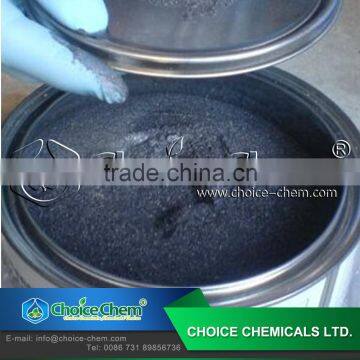 high carbon content and low price Graphite Powder,Carbon powder ,graphateUS$ 300 - 2,000MOQ: 500 Metric TonsChangsha Choice Chemicals Ltd.5 YRS
high carbon content and low price Graphite Powder,Carbon powder ,graphateUS$ 300 - 2,000MOQ: 500 Metric TonsChangsha Choice Chemicals Ltd.5 YRS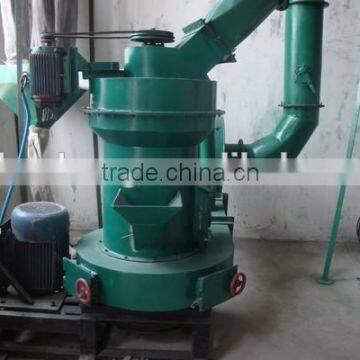 Carbon black making machine,activated carbon making machineUS$ 1 - 3,800MOQ: 1 SetZhengzhou Huahong Machinery Equipment Co., Ltd.5 YRS
Carbon black making machine,activated carbon making machineUS$ 1 - 3,800MOQ: 1 SetZhengzhou Huahong Machinery Equipment Co., Ltd.5 YRS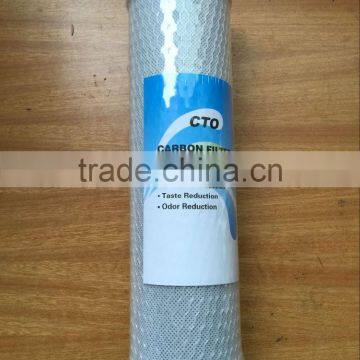 10" CTO/10" activated carbon block /10''high quality activated carbonUS$ 0.55 - 0.55MOQ: 10000 PiecesTaizhou Sophia Import & Export Co., Ltd.5 YRS
10" CTO/10" activated carbon block /10''high quality activated carbonUS$ 0.55 - 0.55MOQ: 10000 PiecesTaizhou Sophia Import & Export Co., Ltd.5 YRS Mesh Belt Dryer for drying activated charcoal powder (drier)US$ 25,000 - 8,000,000MOQ: 1 SetChangzhou Yibu Drying Equipment Co., Ltd.5 YRS
Mesh Belt Dryer for drying activated charcoal powder (drier)US$ 25,000 - 8,000,000MOQ: 1 SetChangzhou Yibu Drying Equipment Co., Ltd.5 YRS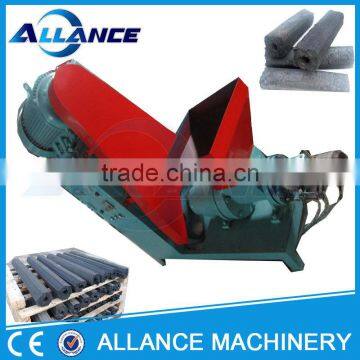 2016 Biomass/carbon powder briquette making machineUS$ 2,200 - 4,000MOQ: 1 SetZhengzhou Allance Trading Co., Ltd.5 YRS
2016 Biomass/carbon powder briquette making machineUS$ 2,200 - 4,000MOQ: 1 SetZhengzhou Allance Trading Co., Ltd.5 YRS pure magnesium carbonate powder sports chalk for sportsUS$ 0.5 - 10MOQ: 1 PieceXingtai Ren County Machine Manufacturing Joint-Stock Company5 YRS
pure magnesium carbonate powder sports chalk for sportsUS$ 0.5 - 10MOQ: 1 PieceXingtai Ren County Machine Manufacturing Joint-Stock Company5 YRS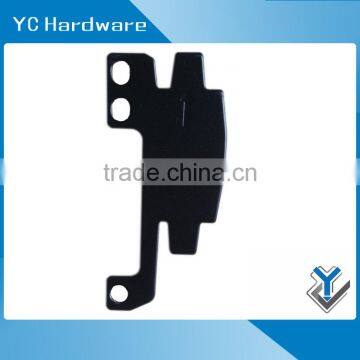 powder-coated carbon steel 3 hole bracketUS$ 0.25 - 0.25MOQ: 2000 PiecesQinhuangdao Yuanchen Hardware Co., Ltd.5 YRS
powder-coated carbon steel 3 hole bracketUS$ 0.25 - 0.25MOQ: 2000 PiecesQinhuangdao Yuanchen Hardware Co., Ltd.5 YRS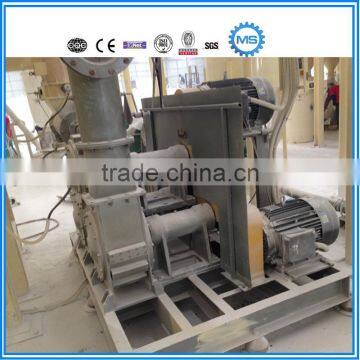 continuous heavy calcium carbonate powder coating machineUS$ 50,000 - 600,000MOQ: 1 SetHenan Machinery & Equipment Company Limited5 YRS
continuous heavy calcium carbonate powder coating machineUS$ 50,000 - 600,000MOQ: 1 SetHenan Machinery & Equipment Company Limited5 YRS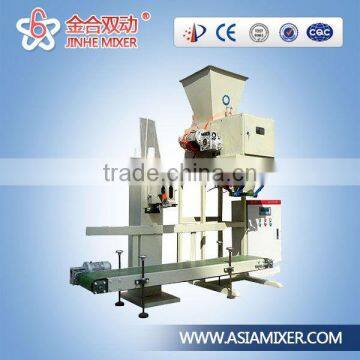 2016 JINHE strontium carbonate powder packing machineUS$ 3,000 - 8,000MOQ: 1 SetZhengzhou Jinhe Machinery Manufacture Co., Ltd.5 YRS
2016 JINHE strontium carbonate powder packing machineUS$ 3,000 - 8,000MOQ: 1 SetZhengzhou Jinhe Machinery Manufacture Co., Ltd.5 YRS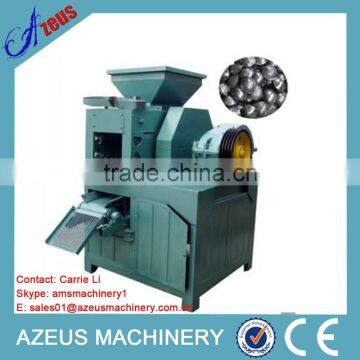 Professional manufacturer carbon powder ball press machineUS$ 2,860 - 5,000MOQ: 1 SetZhengzhou Azeus Machinery Co., Ltd.5 YRS
Professional manufacturer carbon powder ball press machineUS$ 2,860 - 5,000MOQ: 1 SetZhengzhou Azeus Machinery Co., Ltd.5 YRS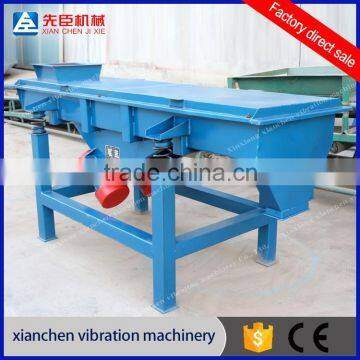 Carbon Steel Linear Vibrating Screen For graphite powderUS$ 2,000 - 5,500MOQ: 1 SetXinxiang Xianchen Vibration Machinery Co., Ltd.5 YRS
Carbon Steel Linear Vibrating Screen For graphite powderUS$ 2,000 - 5,500MOQ: 1 SetXinxiang Xianchen Vibration Machinery Co., Ltd.5 YRS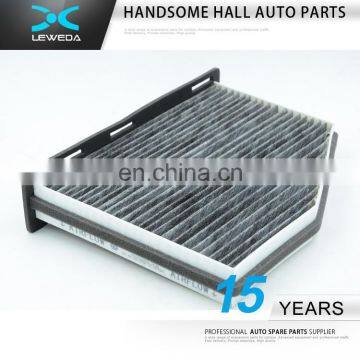 SKODA Auto parts Active Carbon Air Filter 1K1 819 653AUS$ 1.5 - 3MOQ: 100 PiecesFeichi (guangzhou) Trading Co., Ltd.5 YRS
SKODA Auto parts Active Carbon Air Filter 1K1 819 653AUS$ 1.5 - 3MOQ: 100 PiecesFeichi (guangzhou) Trading Co., Ltd.5 YRS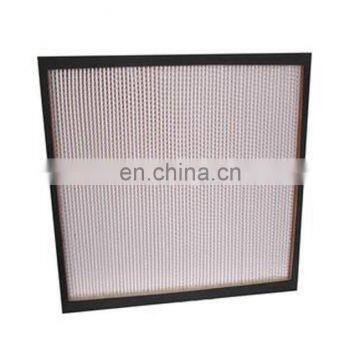 High Efficiency Aluminum Alloy Synthetic Fiber Active Carbon Air FilterUS$ 10 - 15MOQ: 10 PiecesBochi Corporation5 YRS
High Efficiency Aluminum Alloy Synthetic Fiber Active Carbon Air FilterUS$ 10 - 15MOQ: 10 PiecesBochi Corporation5 YRS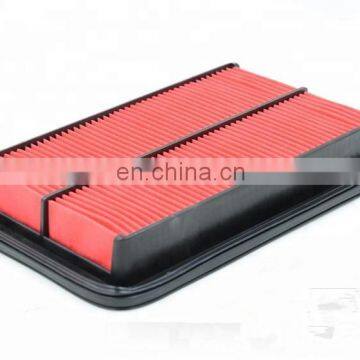 Active Carbon Air Filter FS05-13-Z40 for Mazda 626 GEUS$ 0.1 - 3MOQ: 10 SetsDodge Auto Parts Fuel Injector Trade Co., Ltd.5 YRS
Active Carbon Air Filter FS05-13-Z40 for Mazda 626 GEUS$ 0.1 - 3MOQ: 10 SetsDodge Auto Parts Fuel Injector Trade Co., Ltd.5 YRS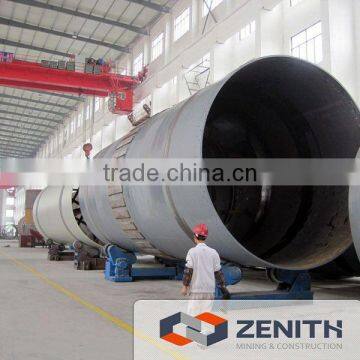 High Efficiency Activated Carbon Rotary Kiln with Large CapacityUS$ 5,000 - 888,888MOQ: 1 SetShanghai Zenith Mining And Construction Machinery Co., Ltd.5 YRS
High Efficiency Activated Carbon Rotary Kiln with Large CapacityUS$ 5,000 - 888,888MOQ: 1 SetShanghai Zenith Mining And Construction Machinery Co., Ltd.5 YRS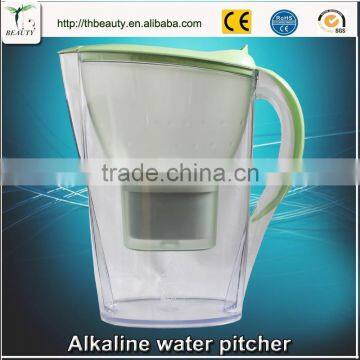 High quality Active carbon aion healthy alkaline water pitcherUS$ 9.9 - 20MOQ: 100 PiecesGuangzhou San Hong International Trade Co., Ltd.5 YRS
High quality Active carbon aion healthy alkaline water pitcherUS$ 9.9 - 20MOQ: 100 PiecesGuangzhou San Hong International Trade Co., Ltd.5 YRS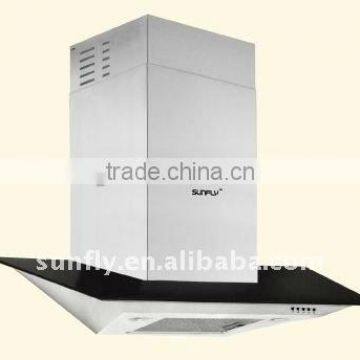 LOH259-04(900mm) activated carbon filter for cooker hoodsNegotiableMOQ: 140 PiecesJiaxing Sunfly Electric Co., Ltd.5 YRS
LOH259-04(900mm) activated carbon filter for cooker hoodsNegotiableMOQ: 140 PiecesJiaxing Sunfly Electric Co., Ltd.5 YRS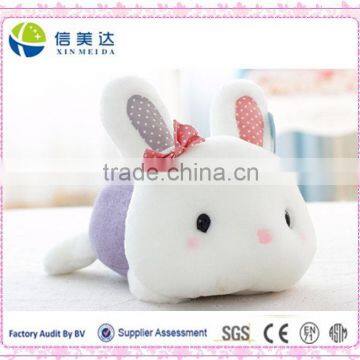 Lovely papa rabbit little toy /activated carbon bag rabbit dollUS$ 1.85 - 3.85MOQ: 500 PiecesYangzhou Xinmeida Toys Co., Ltd.5 YRS
Lovely papa rabbit little toy /activated carbon bag rabbit dollUS$ 1.85 - 3.85MOQ: 500 PiecesYangzhou Xinmeida Toys Co., Ltd.5 YRS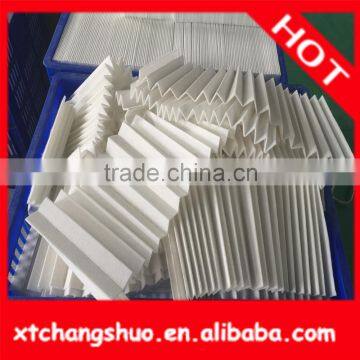 air filter 39588470 hvac activated carbon air filtersUS$ 1 - 5MOQ: 100 PiecesXingtai Changshuo Auto Parts Co., Ltd.5 YRS
air filter 39588470 hvac activated carbon air filtersUS$ 1 - 5MOQ: 100 PiecesXingtai Changshuo Auto Parts Co., Ltd.5 YRS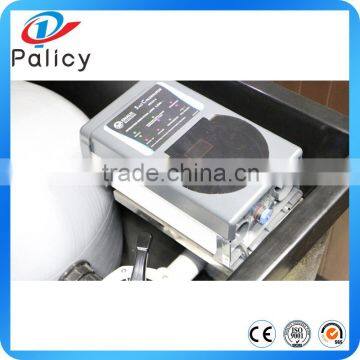 High quality integrative activated carbon filter for swimming poolUS$ 1258.00 - 1258.00MOQ: 1 SetGuangzhou Palicy Trade Co., Ltd.5 YRS
High quality integrative activated carbon filter for swimming poolUS$ 1258.00 - 1258.00MOQ: 1 SetGuangzhou Palicy Trade Co., Ltd.5 YRS ES Operations Head submitted an RFQ for carbon powder ball press machine2025-09-24 01:51:49
ES Operations Head submitted an RFQ for carbon powder ball press machine2025-09-24 01:51:49 KN Verified Buyer is sourcing High quality active carbon foldable mask respirator for industry safty2 hours ago
KN Verified Buyer is sourcing High quality active carbon foldable mask respirator for industry safty2 hours ago SN Sourcing Agent is sourcing water filter element 10inch 85C activated carbon2025-09-21 18:03:18
SN Sourcing Agent is sourcing water filter element 10inch 85C activated carbon2025-09-21 18:03:18 BD Lead Purchaser requested a quote for PTFE filled with carbon fiber gasket filled with carbon, graphite, bronze powder2025-09-22 01:30:31
BD Lead Purchaser requested a quote for PTFE filled with carbon fiber gasket filled with carbon, graphite, bronze powder2025-09-22 01:30:31 TJ Procurement Specialist requested specs for High quality integrative activated carbon filter for swimming pool2025-09-23 16:20:44
TJ Procurement Specialist requested specs for High quality integrative activated carbon filter for swimming pool2025-09-23 16:20:44 MG Import Coordinator requested a quote for New Design Carbon Black Briquette Machine/Coal Powder Ball Press2025-09-25 06:55:38
MG Import Coordinator requested a quote for New Design Carbon Black Briquette Machine/Coal Powder Ball Press2025-09-25 06:55:38 CH Business Owner requested a quote for 2016 Biomass/carbon powder briquette making machine2025-09-22 18:58:10
CH Business Owner requested a quote for 2016 Biomass/carbon powder briquette making machine2025-09-22 18:58:10 TT Procurement Specialist is sourcing High quality Active carbon aion healthy alkaline water pitcher2025-09-24 14:24:56
TT Procurement Specialist is sourcing High quality Active carbon aion healthy alkaline water pitcher2025-09-24 14:24:56 GN Purchasing Director negotiating terms for continuous heavy calcium carbonate powder coating machine2025-09-23 15:00:05
GN Purchasing Director negotiating terms for continuous heavy calcium carbonate powder coating machine2025-09-23 15:00:05 EC Lead Purchaser requested specs for High Efficiency Activated Carbon Rotary Kiln with Large Capacity2025-09-24 09:29:40
EC Lead Purchaser requested specs for High Efficiency Activated Carbon Rotary Kiln with Large Capacity2025-09-24 09:29:40 DK Sourcing Agent is sourcing Carbon black making machine,activated carbon making machine2025-09-26 01:21:44
DK Sourcing Agent is sourcing Carbon black making machine,activated carbon making machine2025-09-26 01:21:44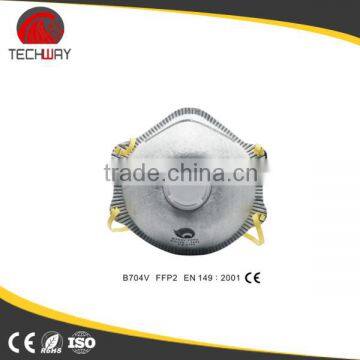 High quality active carbon foldable mask respirator for industry saftyUS$ 0.10 - 0.10MOQ: 20000 PiecesShanghai Techway Industrial Co., Ltd.5 YRS
High quality active carbon foldable mask respirator for industry saftyUS$ 0.10 - 0.10MOQ: 20000 PiecesShanghai Techway Industrial Co., Ltd.5 YRS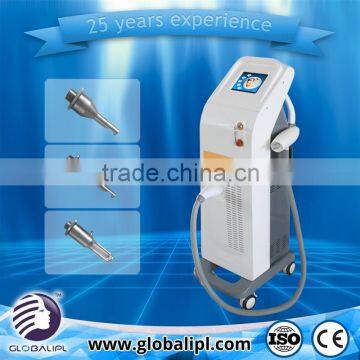 2016 Newest pigment deposit dispelling yag laser with carbon powderUS$ 1 - 10,000MOQ: 1 SetBeijing Globalipl Development Co., Ltd.5 YRS
2016 Newest pigment deposit dispelling yag laser with carbon powderUS$ 1 - 10,000MOQ: 1 SetBeijing Globalipl Development Co., Ltd.5 YRS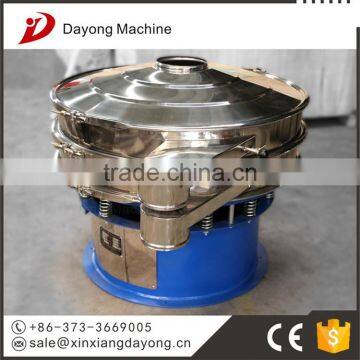 Low noise an unbalanced vibration motor CARBON POWDER vibration screenUS$ 2,800 - 6,000MOQ: 1 SetXinxiang Dayong Vibration Equipment Co., Ltd.5 YRS
Low noise an unbalanced vibration motor CARBON POWDER vibration screenUS$ 2,800 - 6,000MOQ: 1 SetXinxiang Dayong Vibration Equipment Co., Ltd.5 YRS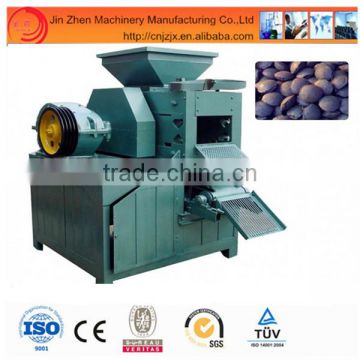 New Design Carbon Black Briquette Machine/Coal Powder Ball PressUS$ 8,000 - 8,000MOQ: 1000 SetsXinxiang City Jinzhen Machinery Manufacturing Co., Ltd.5 YRS
New Design Carbon Black Briquette Machine/Coal Powder Ball PressUS$ 8,000 - 8,000MOQ: 1000 SetsXinxiang City Jinzhen Machinery Manufacturing Co., Ltd.5 YRS



